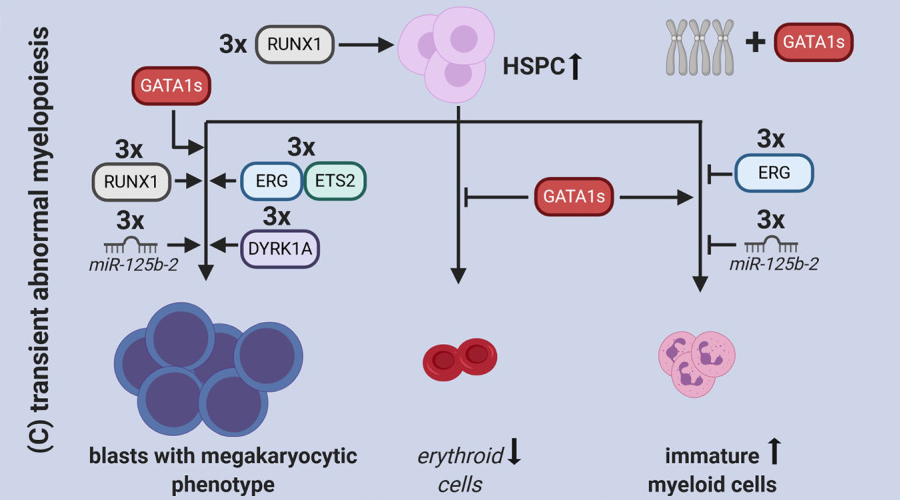
Review of molecular mechanisms underlying TAM and ML-DS
We are happy to share a new review article from our group by Juliane Grimm, about the molecular mechanisms of the genetic predisposition to acute megakaryoblastic leukemia in infants with Down syndrome.In this review, Juliane provides a detailed genetic and mechanistic overview of transient abnormal myelopoiesis (TAM) and Down syndrome-associated myeloid leukemia (ML-DS).
Individuals with Down syndrome are genetically predisposed to developing acute megakaryoblastic leukemia. Also known as ML-DS, this disease follows a model of step-wise leukemogenesis where perturbed hematopoiesis already presents in utero, facilitating the acquisition of additional driver mutations such as truncating GATA1 variants, which are pathognomonic to the disease. The affected individuals suffer from TAM — a pre-leukemic state preceding progression to ML–DS. In our review, we focus on the molecular mechanisms that underpin the different steps of clonal evolution in Down syndrome leukemogenesis. In doing so, we aim to provide a comprehensive view of the complex interplay between gene dosage imbalances, GATA1 mutations, and somatic mutations affecting JAK-STAT signaling, the cohesin complex and epigenetic regulators, in this disease.